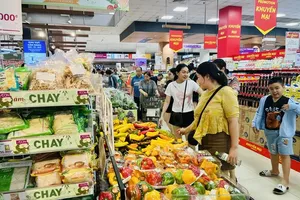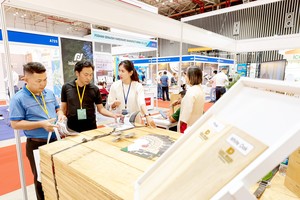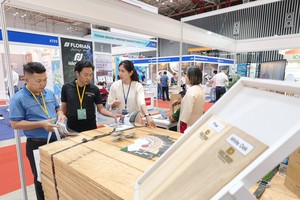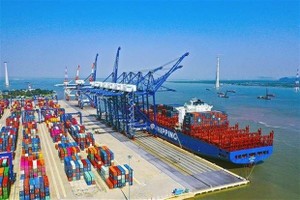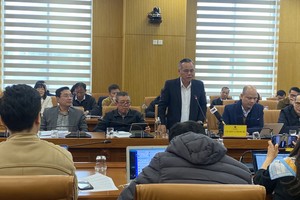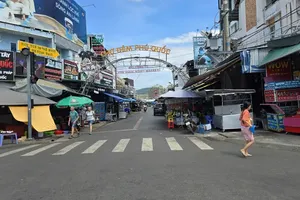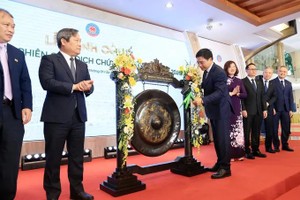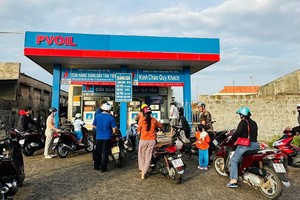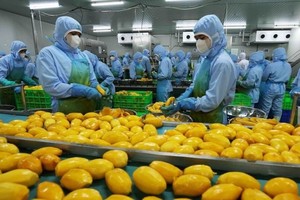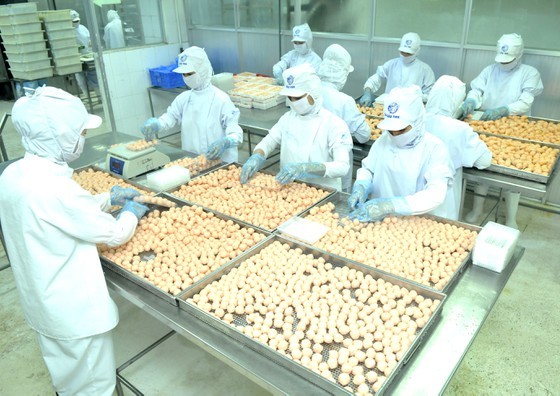
According to Mr. Hoang Minh Chien, deputy head of the Trade Promotion Agency under the Ministry of Industry and Trade, processed agricultural products of Vietnam have entered 180 countries and territories in the world, even choosy markets, such as the US, Japan, South Korea and the EU.
Of which, 50 markets are considered as traditional markets with export turnover growth always maintaining at a two-digit number. Vietnam has built industrial agro-forestry-aquatic processing system with processing capacity of 120 million tons of materials per year, consisting of more than 7,500 enterprises attached with export scale. However, it is acknowledged that Vietnam still mainly exports raw materials.
Explaining about this issue, Ms. Ly Kim Chi, chairwoman of the Food and Foodstuff Association of Ho Chi Minh City, said that domestic processing facilities and enterprises were limited in investment capital so upgrading production technology was slow and failed to meet technical and quality barriers set by global market. On the other hand, although farm produce are diverse and plentiful, there is a shortage of enterprises which invest in intensive processing and pure material processing.
Consequently, 90 percent of pure materials for processing depends on importing. In fact, recent changes in foreign currency exchange rate have affected negatively competitiveness of enterprises. In addition, there are still other shortcomings, such as processing technology of some product lines is still behind the times; the capacity to process raw materials into pure materials is still limited with low quality; material supply for processing remain unsteady, leading to competitiveness of enterprises to be weak.
However, according to economic experts, this is potential room to attract foreign enterprises to invest and complete the chain of the food processing industry of Vietnam. In fact, foreign direct investment (FDI) enterprises have been pumping investments into this sector. In the first ten months of this year, industrial processing and manufacturing sector has attracted US$9.13 billion, accounting for 71.2 percent of total newly-registered capital.
If including additional capital, FDI capital into industrial processing and manufacturing sector in the first ten months will reach more than $13.87 billion, accounting for 75.8 percent of total registered capital. As for capital contribution and purchase of shares, foreign investors have poured into industrial processing and manufacturing sector more than $5.95 billion, accounting for 55 percent of total capital contribution. Hong Kong (China) is leading in this sector in Vietnam, followed by South Korea and Malaysia.
Since the beginning of this year, the Government has put forward several preferential policies to attract investment in order to raise the processing ratio of key agro-aquatic products, apply international standards during production procedure, thereby build brand names and improve competitiveness for agro-forestry-aquatic products of Vietnam.
Particularly, general preferential treatment is import tariff exemption on machineries, materials, specialized means of transport, materials that cannot be produced domestically, and raw materials for processing or export product processing. As for food processing sector, besides general preferential treatment, enterprises also receive preferential tax rate of 10 percent on incomes from investments in post-harvest farm produce processing and agro-aquatic product and food preserving.
Enterprises will also be supported in human resources training, market development and science and technology application. The Government has instructed provinces to project again agricultural material areas, at the same time determine again long-term land use plan for each foreign investors in the field of agriculture and agricultural product and food processing.
Dr. Frauke Schmitz Bauerdick, head of Germany’s Trade Promotion and Investment Agency in Vietnam, said that German consumers in particular and European consumers in general are fond of Vietnamese products from food to clothes and footwear. In recent years, the ratio of Vietnamese goods imported into Germany has ceaselessly increased. This along with investment preferential policies that Vietnamese Government has been applying will encourage the presence of German enterprises in Vietnam in the near future.
As for Vietnamese enterprises, in order to improve competitiveness and participate deeply into global market, they need to comply with food safety standards, upgrade equipment, improve cost prices as well as product quality. Moreover, they need to actively approach distribution channels and purchase partners in order to discuss and raise their business opportunities.
Of which, 50 markets are considered as traditional markets with export turnover growth always maintaining at a two-digit number. Vietnam has built industrial agro-forestry-aquatic processing system with processing capacity of 120 million tons of materials per year, consisting of more than 7,500 enterprises attached with export scale. However, it is acknowledged that Vietnam still mainly exports raw materials.
Explaining about this issue, Ms. Ly Kim Chi, chairwoman of the Food and Foodstuff Association of Ho Chi Minh City, said that domestic processing facilities and enterprises were limited in investment capital so upgrading production technology was slow and failed to meet technical and quality barriers set by global market. On the other hand, although farm produce are diverse and plentiful, there is a shortage of enterprises which invest in intensive processing and pure material processing.
Consequently, 90 percent of pure materials for processing depends on importing. In fact, recent changes in foreign currency exchange rate have affected negatively competitiveness of enterprises. In addition, there are still other shortcomings, such as processing technology of some product lines is still behind the times; the capacity to process raw materials into pure materials is still limited with low quality; material supply for processing remain unsteady, leading to competitiveness of enterprises to be weak.
However, according to economic experts, this is potential room to attract foreign enterprises to invest and complete the chain of the food processing industry of Vietnam. In fact, foreign direct investment (FDI) enterprises have been pumping investments into this sector. In the first ten months of this year, industrial processing and manufacturing sector has attracted US$9.13 billion, accounting for 71.2 percent of total newly-registered capital.
If including additional capital, FDI capital into industrial processing and manufacturing sector in the first ten months will reach more than $13.87 billion, accounting for 75.8 percent of total registered capital. As for capital contribution and purchase of shares, foreign investors have poured into industrial processing and manufacturing sector more than $5.95 billion, accounting for 55 percent of total capital contribution. Hong Kong (China) is leading in this sector in Vietnam, followed by South Korea and Malaysia.
Since the beginning of this year, the Government has put forward several preferential policies to attract investment in order to raise the processing ratio of key agro-aquatic products, apply international standards during production procedure, thereby build brand names and improve competitiveness for agro-forestry-aquatic products of Vietnam.
Particularly, general preferential treatment is import tariff exemption on machineries, materials, specialized means of transport, materials that cannot be produced domestically, and raw materials for processing or export product processing. As for food processing sector, besides general preferential treatment, enterprises also receive preferential tax rate of 10 percent on incomes from investments in post-harvest farm produce processing and agro-aquatic product and food preserving.
Enterprises will also be supported in human resources training, market development and science and technology application. The Government has instructed provinces to project again agricultural material areas, at the same time determine again long-term land use plan for each foreign investors in the field of agriculture and agricultural product and food processing.
Dr. Frauke Schmitz Bauerdick, head of Germany’s Trade Promotion and Investment Agency in Vietnam, said that German consumers in particular and European consumers in general are fond of Vietnamese products from food to clothes and footwear. In recent years, the ratio of Vietnamese goods imported into Germany has ceaselessly increased. This along with investment preferential policies that Vietnamese Government has been applying will encourage the presence of German enterprises in Vietnam in the near future.
As for Vietnamese enterprises, in order to improve competitiveness and participate deeply into global market, they need to comply with food safety standards, upgrade equipment, improve cost prices as well as product quality. Moreover, they need to actively approach distribution channels and purchase partners in order to discuss and raise their business opportunities.
